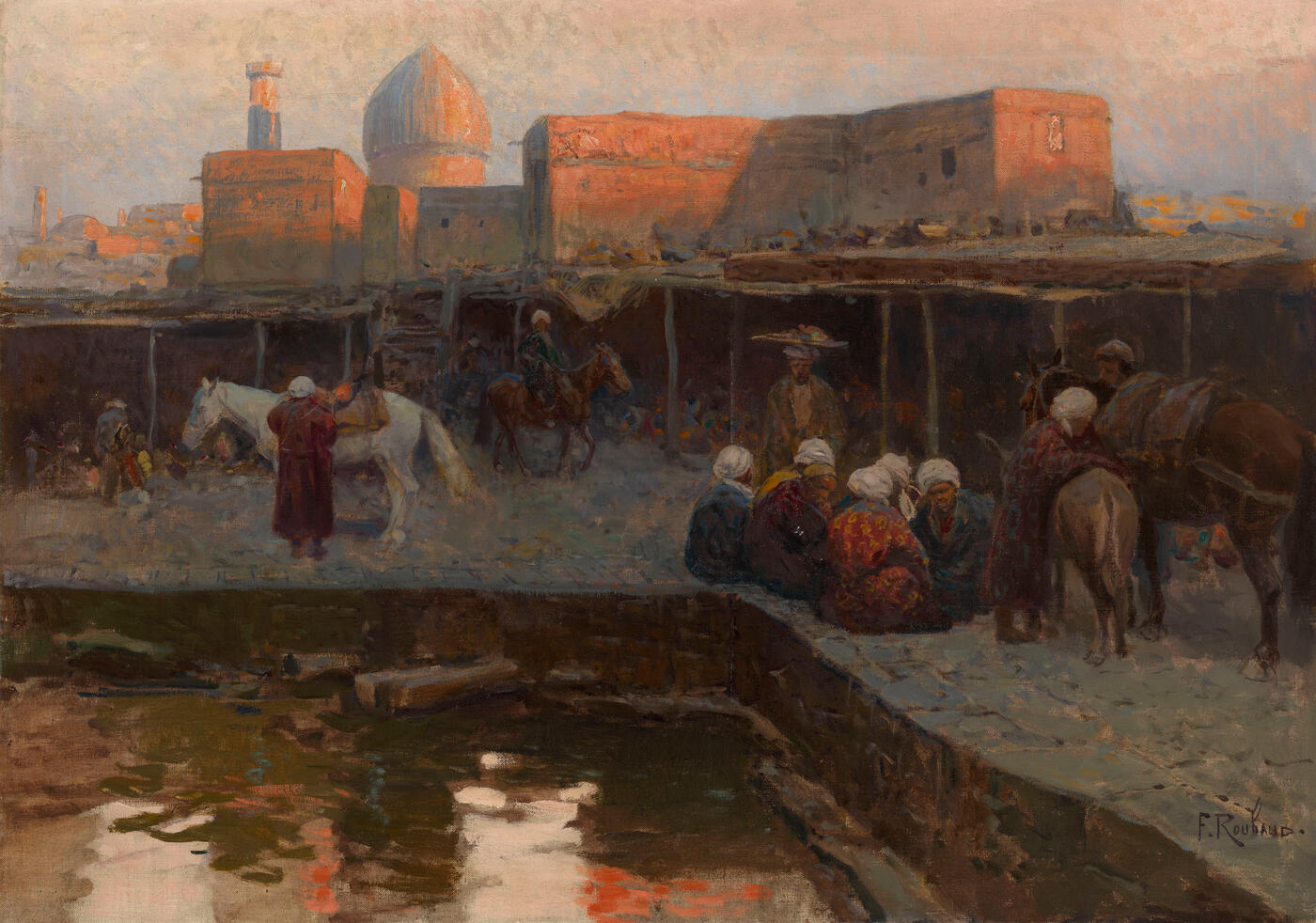25 - 28 November 2012 Russian Art Auctions
25 November 2012

* 3. ROUBAUD, FRANTS (1856–1928)
Caravanserai by Gur-e Amir in Samarkand, signed.
Oil on canvas, 59.5 by 83.5 cm.
90,000–150,000 GBP
Authenticity of the work has been confirmed by the expert V. Petrov.
Authenticity has also been confirmed by the expert A. Kiseleva.
Literature: O. Sugrobova-Roth and E. Lingenauber, Franz Roubaud.
Catalogue raisonné, Cologne, 2012, p. 222, No. 515, illustrated.
This striking work Caravanserai by Gur-e Amir in Samarkand belongs to Frants Roubaud’s recognisable series of paintings of Central Asia which, along with his battle scenes, brought him great renown.
The artist often travelled to Central Asia and the Caucasus in order to gather extensive sketch material which he would then regularly reuse in his paintings. The impressions he brought back with him were enough to last for years.
Roubaud was genuinely interested in the life and customs of the local people and he often depicted genre scenes which illustrated the colour and exoticism of Central Asia. Scenes of merchants’ caravans and bazaars were to become his favourite subject.
The composition of Caravanserai by Gur-e Amir in Samarkand is based on the contrast between the majesty of the mosque, bathed in the light of the setting sun, and the leisurely goings-on of the travellers and merchants who have stopped in the city to rest. The measured tone and harmonious palette of the painting create a particular feeling of peacefulness among the wayfarers who are enjoying the
cool of the evening after the heat of the day.
Gur-e Amir is the mausoleum of the Asian conqueror Tamerlane in Samarkand, built in the 14th century by Tamerlane’s descendants, the ruling Mughal dynasty of North India. It occupies an important place in the history and culture of the region.
Notes on symbols:
* Indicates 5% Import Duty Charge applies.
Ω Indicates 20% Import Duty Charge applies.
§ Indicates Artist's Resale Right applies.
† Indicates Standard VAT scheme applies, and the rate of 20% VAT will be charged on both hammer price and premium.